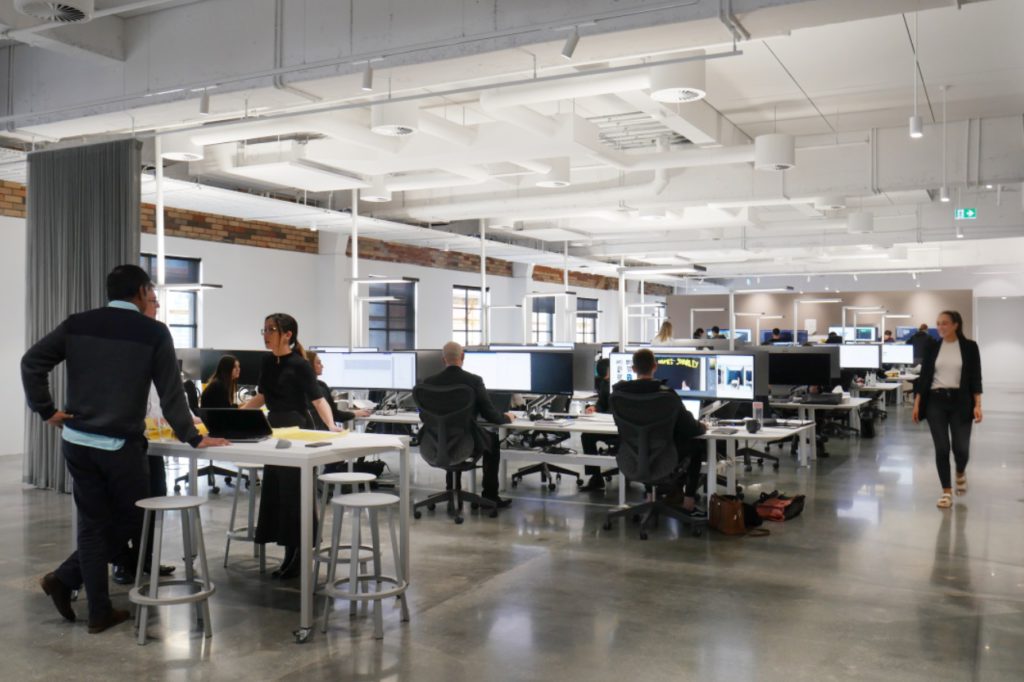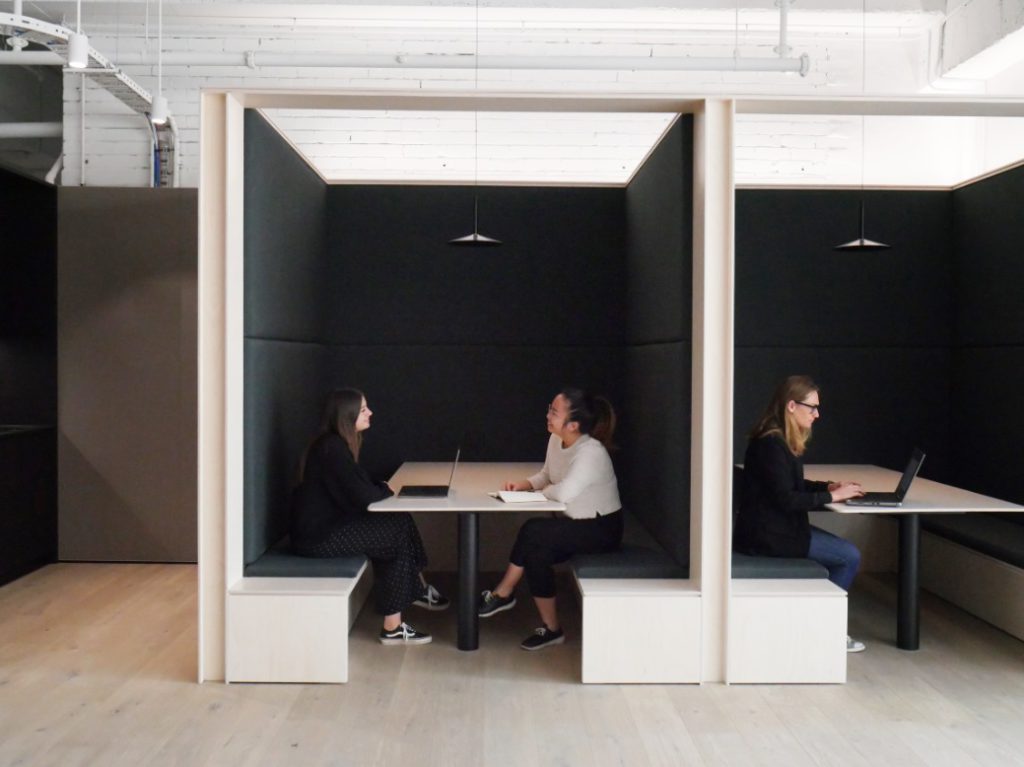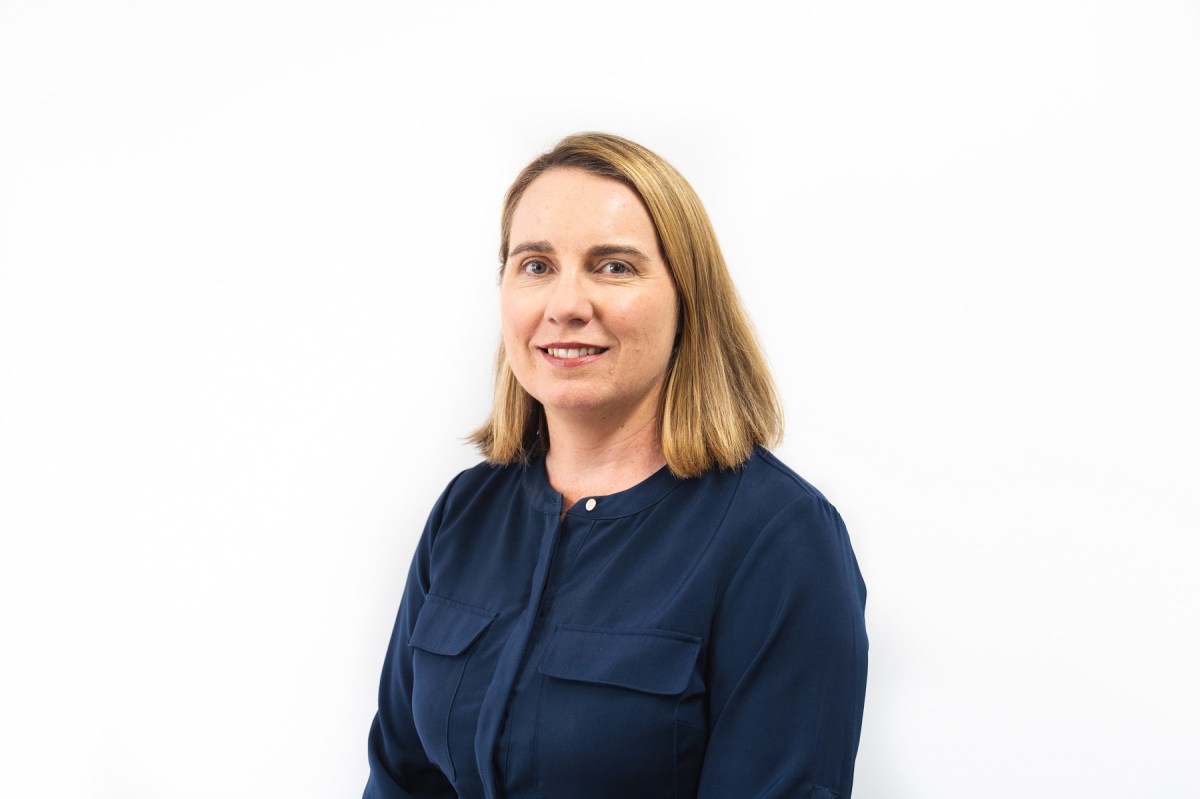Australian workers will undoubtedly look back on the twenty-teens with a mixture of curiosity and disbelief, as an era when the full working week was spent exclusively ‘in the office’, surrounded by colleagues, nine to five.
COVID-19 has triggered an increased adoption of a mixed work-setting approach, with the ABS noting two in five employed people worked from home at least once a week in February 2021, in contrast to one quarter doing so in March 2020. In fact, in its 2021 report on Australian demographic trends, McCrindle Research noted that working from home has been the biggest shift in employee behaviour in a century.
Pandemic necessity (and subsequent workplace policy shifts responding to the proof that we can be efficient and effective while working remotely) means the hybrid workplace is here to stay. Many people have discovered they enjoy a mixed week of both home and office days, with each having their benefits. In Hames Sharley’s recent survey of attitudes towards working from home, 46% of the team supported a hybrid working model, while only one-third did not.
So, if the hybrid model is now gaining traction, how do companies define their workplaces as preferable settings? And which ingredients are most sought by staff to encourage face to face meetings in the office, rather than video conferencing? Through the execution of our new Perth studio, Hames Sharley is leading the way in showcasing how offices can attract staff back into the workplace, and in turn benefit the city, our people and project outcomes.

These socio-economic shifts raise critical questions across the urban planning and design industry. How do they affect our public transport system demands and improve road commute times? Is there enough footfall from workers to shops, cafés, and bars in central office precincts? Conversely, for local neighbourhood centres, what are the productivity, economic and social benefits of people working at home?
The findings
In a comprehensive national study recently undertaken by the Property Council with EY, CBD users and a panel of big thinkers were asked about the values and attractions they perceive in our capital cities, given the upheavals of the past year. The key finding was that with the forced absence of business and employment from our cities, the role of and emphasis on both were set to morph as people returned. No longer is ‘business’ the core word, with ‘lifestyle’ and ‘leisure’ moving front and centre.
The response from an organisational perspective has been varied, with some companies rapidly recognising the benefits of increased working from home by rationalising their CBD office footprint. Global corporates have responded at both ends of the spectrum, with some offering full ‘work anywhere, anytime’ flexibility and others mandating a return to the office.
The middle ground between these extremes is most workers’ and employers’ preference, however, without the previous regularity and intensity of footfall on weekdays and evenings, businesses in the retail and food and beverage sector are suffering. This is heightened by remote workers tending to favour returning to the office on certain days of the week, leaving dramatic downturns in activity on others. In some instances, government departments have taken the lead and dictated their staff (and in some cases, suppliers and consultants) to work in the office Mondays and Fridays, to combat the tendency towards mid-week lumpiness in work patterns.
The outcomes
As built-form design professionals, it is critical we focus on the features that workers seek from their environment. By understanding workers’ desires, we can better:
- Extract the best value and broad benefits from their time spent commuting;
- Encourage creative and collaborative professionals to come together in workplaces, enabling exceptional outcomes; and
- Support businesses – and cities – reliant on workers’ spending and activity.

As ‘creative and collaborative’ professionals these upheavals to work and life presented an opportunity to introduce a bespoke response. What better way is there to understand, than by casting an eye over our own workplace? As my colleague, Stephen Moorcroft, says: “We believe that great design can reflect and support organisational culture and empower organisational success.”
A grand statement from Hames Sharley’s Principal of Workplace it may be, but it is one that was instrumental in the planning of our new Perth studio in Hay Street Mall. Not only was it an exercise in adaptive reuse, but our team leaders also needed to choose a location and determine the functional qualities of the space through the lens of their employees’ desires.
Visioning workshops were undertaken with staff early on to ascertain their ‘wants’, ‘needs’ and what they considered to be important in making a collective contribution, as design professionals, to Perth City’s built environment.
Firstly, the studio’s location was important. It needed to be as convenient and central as possible, aligned to the location of many clients and collaborators, close to transport hubs and provide great amenity to staff, both during and beyond the workday.
The potential of underutilised assets was also discussed, with Hames Sharley choosing an upper-level space that had lain vacant for 35 years. The resulting activation of this retail mall site now serves as an exemplar of sensitive adaptive re-use, while the provision for a ground-floor foyer café, use of terraces and an extension towards the mall aims to enhance the sense of place.
Importantly, the design reflects our staff-defined values and aspirations for their workplace experience and that of visitors. It provides options to be both creative and focused, dynamic, and playful, collaborative and encouraging of diversity, with access to natural light, fresh air and areas for interaction and socialisation priorities.
The floorspace occupied is greater than the current employee requirements, offering both capacity to grow and ample room to host events that support and educate. Hames Sharley now hosts joint forums with The University of Western Australia, while Curtin University students partake in regular on-site initiatives under the custodianship of our Research and Development duo, Khoa Do and Emil Jonescu.
Studio leadership and implementation of the Perth team’s work/life transformation has been the product of an immense focus and effort with noticeable rewards in a short space of time. “Amid the challenges and upheaval of the past year the fact the practice has prospered through delivery of the new Perth Studio is evidence of the strategic vision and tenacity of our team,” says Director and Studio Leader Brook McGowan.
The quality and texture of the overall space is as inspiring, as it is comfortable. The mood has changed, with mixing between people naturally encouraged, sparking new friendships and opportunities for sharing knowledge. Alongside this is the technology and support to allow flexibility for work from home, depending on individual needs and work task situations.
Hames Sharley’s proof has been in the pudding. Collectively, we responded to rapidly transforming workplace and city dynamics with an innovative new studio that provides a space tailored to staff, is welcoming to clients and collaborators and encourages future professionals in our sector. Studios of this calibre in the heart of Perth are precisely the sort of vibrant, interesting, and invigorating settings that encourage a journey into work, rather than the home office.
Rebecca Spencer is associate and senior planner at Hames Sharley.

